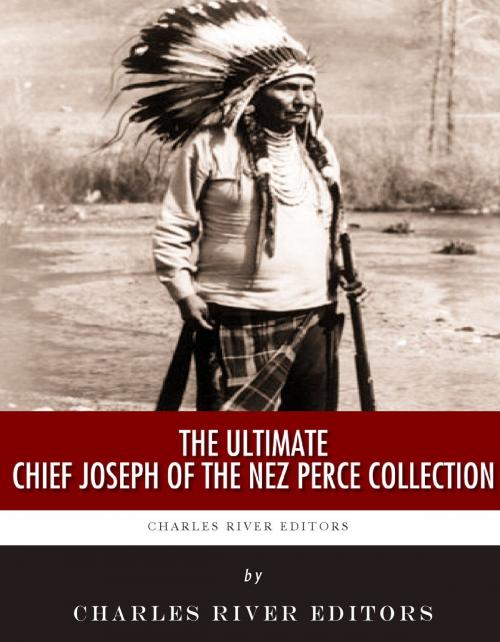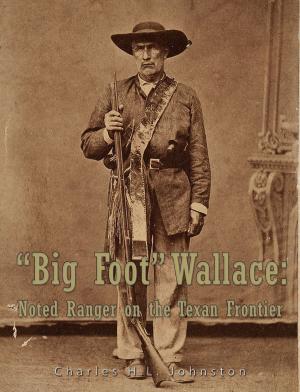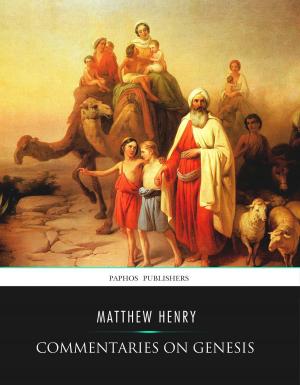The Ultimate Chief Joseph of the Nez Perce Collection
Nonfiction, History, Americas, Native American, Biography & Memoir, Historical| Author: | Chief Joseph, Charles River Editors | ISBN: | 9781475322019 |
| Publisher: | Charles River Editors | Publication: | February 22, 2013 |
| Imprint: | Language: | English |
| Author: | Chief Joseph, Charles River Editors |
| ISBN: | 9781475322019 |
| Publisher: | Charles River Editors |
| Publication: | February 22, 2013 |
| Imprint: | |
| Language: | English |
Includes:•Charles River Editors original biography of Chief Joseph•The autobiographical Chief Josephs Own Story“Our fathers gave us many laws, which they had learned from their fathers. These laws were good. They told us to treat all people as they treated us; that we should never be the first to break a bargain; that is was a disgrace to tell a lie; that we should speak only the truth; that it was a shame for one man to take another's wife or his property without paying for it.” Chief JosephWhen he died in 1904, most Americans who knew his peoples story considered Chief Joseph, whose Nez Percé name is Himahtooyahlatkekt (“Thunder Rolling Down from the Mountains”), a military genius and an “Indian Napoleon.” This assessment of the Native American leader was based on a 1,500-mile odyssey during which he and his people left their reservation in the hopes of escaping to Canada, where the Nez Percé intended to join Sitting Bull and his Hunkpapa Sioux band. The real Chief Joseph was a gifted speaker and more diplomat than war leader. Its not surprising that Chief Joseph was misunderstood and misrepresented by Americans because his peoples name was as well; Nez Percé literally means “pierced nose” in French, but it is unclear whether the tribe ever used nose piercing as a form of ornament. At the time of Josephs birth, the Nez Percé were rapidly becoming the most influential and wealthy tribe in the region, and their prospects seemed bright. Lewis and Clark had considered his ancestors sufficiently friendly and reliable that they left their horses with them as they loaded onto canoes and journeyed to the Pacific Coast. By the time of Josephs birth in 1840, the Nez Percé had maintained friendly relations with American settlers for several decades. But their attitudes would soon change as the United States government began to coerce them to cede their traditional homeland to newly arrived white settlers, and the Nez Percé began suffering a fate very similar to that of other Native American tribes to the east. Joseph had inherited tribal leadership from his father in 1871, and for six tumultuous years he attempted to peacefully resist settlers who desired the tribes fertile potential farmland in the Wallowa Valley of present-day northeastern Oregon. Thus it was Chief Joseph who fought the Nez Perce War against the U.S. Army in 1877, earning grudging respect from the people who sought to defeat them. The Ultimate Chief Joseph of the Nez Perce Collection profiles the amazing life and leadership of the famous Native American Chief, examining the results of the war and analyzing his lasting legacy. This collection includes an original biography by Charles River Editors and the autobiographical Chief Josephs Own Story. This collection also includes pictures, a bibliography and a Table of Contents.
Includes:•Charles River Editors original biography of Chief Joseph•The autobiographical Chief Josephs Own Story“Our fathers gave us many laws, which they had learned from their fathers. These laws were good. They told us to treat all people as they treated us; that we should never be the first to break a bargain; that is was a disgrace to tell a lie; that we should speak only the truth; that it was a shame for one man to take another's wife or his property without paying for it.” Chief JosephWhen he died in 1904, most Americans who knew his peoples story considered Chief Joseph, whose Nez Percé name is Himahtooyahlatkekt (“Thunder Rolling Down from the Mountains”), a military genius and an “Indian Napoleon.” This assessment of the Native American leader was based on a 1,500-mile odyssey during which he and his people left their reservation in the hopes of escaping to Canada, where the Nez Percé intended to join Sitting Bull and his Hunkpapa Sioux band. The real Chief Joseph was a gifted speaker and more diplomat than war leader. Its not surprising that Chief Joseph was misunderstood and misrepresented by Americans because his peoples name was as well; Nez Percé literally means “pierced nose” in French, but it is unclear whether the tribe ever used nose piercing as a form of ornament. At the time of Josephs birth, the Nez Percé were rapidly becoming the most influential and wealthy tribe in the region, and their prospects seemed bright. Lewis and Clark had considered his ancestors sufficiently friendly and reliable that they left their horses with them as they loaded onto canoes and journeyed to the Pacific Coast. By the time of Josephs birth in 1840, the Nez Percé had maintained friendly relations with American settlers for several decades. But their attitudes would soon change as the United States government began to coerce them to cede their traditional homeland to newly arrived white settlers, and the Nez Percé began suffering a fate very similar to that of other Native American tribes to the east. Joseph had inherited tribal leadership from his father in 1871, and for six tumultuous years he attempted to peacefully resist settlers who desired the tribes fertile potential farmland in the Wallowa Valley of present-day northeastern Oregon. Thus it was Chief Joseph who fought the Nez Perce War against the U.S. Army in 1877, earning grudging respect from the people who sought to defeat them. The Ultimate Chief Joseph of the Nez Perce Collection profiles the amazing life and leadership of the famous Native American Chief, examining the results of the war and analyzing his lasting legacy. This collection includes an original biography by Charles River Editors and the autobiographical Chief Josephs Own Story. This collection also includes pictures, a bibliography and a Table of Contents.















